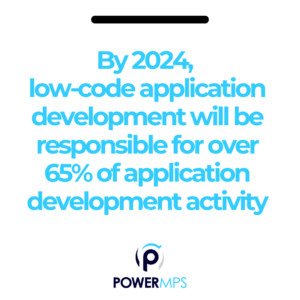Coding Evolved: The Past, Present, and Future of Programming
The incredible story of coding, the essential engine powering our modern digital world, begins much earlier than many realize. The rudimentary form of programming came into existence in the 1800s, when people manipulated punch cards to control the operations of devices like Charles Babbage’s Analytical Engine. This marked the first time human instructions were translated into a format readable by a machine, paving the way for the age of automation and the digital revolution.
The Revolution of High-Level Languages
The mid-20th century marked a significant turning point in the history of coding with the emergence of high-level programming languages. The first among these was Fortran, an innovative creation by IBM that revolutionized the landscape of programming.
Fortran stood as a beacon of change in the coding world, simplifying the intricate processes that had once dominated the domain. Unlike the low-level languages of the era, it did not demand programmers to delve into the complexities of the machine language or the architecture of the computer systems.
Instead, Fortran provided a more abstract way of programming, using a syntax that echoed English language constructs. This represented a dramatic leap from the complex, machine-specific code that programmers were accustomed to, facilitating a more intuitive and less error-prone coding environment..
The development of Fortran streamlined the coding process, leading to a significant reduction in debugging and coding time. Programmers could now produce efficient code more quickly and with fewer errors, enhancing productivity and spurring further technological advancements.
The arrival of high-level languages such as Fortran was indeed a transformative shift, paving the way for the myriad of high-level languages we see today. This revolution underscored the potential of abstracting away from hardware specifics, leading to the development of more complex software systems, ultimately driving the digital age forward.
Transition to Object-Oriented Programming: A Paradigm Shift
High-level languages set the foundation for more sophisticated forms of programming. The decades of the 60s and 70s witnessed the birth of languages like ALGOL, COBOL, and C These languages empowered programmers to shift their focus from the hardware they were coding on to the logic of the code itself.
This transition reached its pinnacle in the 1980s with the emergence of object-oriented programming (OOP). Languages such as C++ and Java, embodying the principles of OOP, allowed developers to write reusable code, enhancing efficiency, and managing larger software projects with more ease. This was particularly beneficial for businesses adopting enterprise resource planning (ERP) software, as the modular nature of OOP enabled scalable solutions.
Coding in the Internet Age: The Arrival of Scripting Languages
create and manage dynamic web content, driving the emergence of scripting languages. These high-level languages, such as JavaScript, PHP, and Python, have propelled the development of interactive web pages and are integral to the modern web we know today.
JavaScript, for instance, became the lifeblood of dynamic web content, allowing for interactive elements like forms, animations, and other user-driven content. PHP, on the other hand, brought dynamism to the server-side, enabling developers to create web pages with real-time access to databases.
Python, though not exclusively a scripting language, gained traction for its simplicity and versatility. It found numerous applications, from web development to data analysis, becoming an omnipresent force in coding.
These scripting languages not only enhanced the capabilities of developers but also made coding more accessible to newcomers, contributing to the evolution of coding in the internet age.
The Rise of Low-Code/No-Code: Democratizing Coding

The ascendance of low-code/no-code platforms represents a profound shift in the world of programming, one that is democratizing the act of coding and expanding its reach beyond the realm of trained developers. By simplifying the application development process, these platforms are redefining what it means to be a coder and breaking down barriers that have traditionally separated programmers from non-programmers.
Low-code/no-code platforms allow individuals and businesses to create software applications using intuitive, graphical interfaces that minimize the need for traditional, manual coding. Instead of writing complex lines of code, users can now manipulate prebuilt components and functions to design and deploy applications rapidly and efficiently. This reduction in the need for specialized coding skills is expanding access to software development, enabling a more diverse range of people to create solutions to address their specific needs.
These platforms are not only transforming who can develop software, but also how software is developed. They enable rapid prototyping, iteration, and deployment of applications, significantly reducing the time from idea to implementation. This agility is particularly beneficial in the fast-paced digital world, where the ability to quickly respond to changes can provide a significant competitive advantage.
As such, the rise of low-code/no-code platforms signifies a democratization of coding, opening up the benefits of software development to a wider audience and fostering a new era of innovation and inclusivity in the digital world.
The Future of Coding: A New Horizon
As we venture into the future, the realm of coding continues to evolve, bringing forth revolutionary concepts that promise to transform the way we create and interact with software. A striking development in this domain is Quantum computing, It challenges traditional coding paradigms with its superposition and entanglement principles, introducing a whole new approach to problem-solving.
Artificial Intelligence (AI) and Machine Learning (ML) are also set to play a pivotal role. They are fostering the creation of intelligent algorithms capable of learning and improving over time. These technologies not only promise to automate mundane coding tasks but might even help to generate complex code in the future.
Moreover, the low-code/no-code movement and advancements in cloud computing are pushing towards making coding more accessible, enabling more people to create applications without needing to understand complex syntax.
The future of coding is indeed a new horizon, filled with unlimited possibilities.
Learn more about Power MPS and how they can help office equipment dealers


Comments (0)